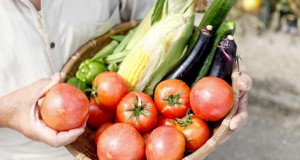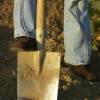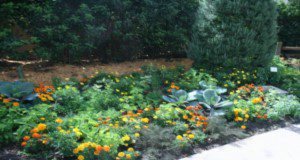Growing your own Florida vegetable garden can be a rewarding experience with a little planning. This 5-page publication of the UF/IFAS Horticultural Sciences Department presents an overview of proper seed selection and planting. It also provides best management practices, as well as relevant terms and methods, for seeding vegetables in home and community gardens. Written by Danielle Treadwell, David Outerbridge, Tabitha Petri, and James M. Stephens.
https://edis.ifas.ufl.edu/vh026
Tag: Vegetable Gardening
Edible Landscaping Using the Nine Florida-Friendly LandscapingTM Principles
Maintaining edible landscapes in a way that protects the environment is an important concern for protecting Florida’s water quality. The objective of this new 7-page publication is to introduce the framework of the Florida-Friendly Landscaping™ principles and apply the principles to guide decisions about Best Management Practices (BMPs) for care of edible landscapes. Written by Tiare Silvasy, Lynn Barber, Esen Momol, Tina McIntyre, Tom Wichman, Gail Hansen, Jen Marvin, Terra Freeman, Joseph Sewards, Wendy Wilber, and Jacqlyn Rivas.
https://edis.ifas.ufl.edu/ep594
School Gardens: A Growing Part of Schools

School gardens have been popping up like little pea plants in schools all over Florida. Not only are they an excellent way to get fresh produce into classrooms and cafeterias, but they also provide students with a living classroom where concepts related to science, math, agriculture, and nutrition can be learned and applied. This 4-page fact sheet discusses the benefits of school gardens to children and teachers, different types of school gardens, and points to consider while planning. Written by Kohrine Counts and Karla P. Shelnutt, and published by the UF Department of Family, Youth and Community Sciences, February 2016.
http://edis.ifas.ufl.edu/fy1463
Florida Vegetable Gardening Guide — Revised!

Vegetable gardening offers fresh air, sunshine, exercise, enjoyment, mental therapy, nutritious fresh vegetables, and economic savings, as well as many other benefits. With some attention to planning and planting, vegetables can be grown year-round in Florida. This 11-page guide provides recommendations primarily for traditional home gardens, including planning your garden and choosing crops, soil preparation and maintenance, fertilization, irrigation, pest management, and other gardening know-how. Includes a planting guide, table of suggested varieties, and table of products labeled for insect and mite management in home vegetable gardens. Written by Sydney Park Brown, Danielle Treadwell, J. M. Stephens, and Susan Webb, and published by the Environmental Horticulture Department.
http://edis.ifas.ufl.edu/vh021
Soil Preparation And Liming for Vegetable Gardens
 Probably the most physical part of vegetable gardening is preparing the soil for planting. In large gardens, mechanical equipment, such as rototillers or tractor-drawn plows, often is necessary, and it may be practical to rent such equipment or hire someone. However, in smaller gardens, the task can be accomplished with a spade, spading fork, or shovel. Much depends on the type of roots and vegetation that must be removed.This 2-page fact sheet was written by James M. Stephens and Guodong Liu, and published by the UF Department of Horticultural Sciences, June 2013.
Probably the most physical part of vegetable gardening is preparing the soil for planting. In large gardens, mechanical equipment, such as rototillers or tractor-drawn plows, often is necessary, and it may be practical to rent such equipment or hire someone. However, in smaller gardens, the task can be accomplished with a spade, spading fork, or shovel. Much depends on the type of roots and vegetation that must be removed.This 2-page fact sheet was written by James M. Stephens and Guodong Liu, and published by the UF Department of Horticultural Sciences, June 2013.
http://edis.ifas.ufl.edu/vh024
PP200/PP121: A Series on Diseases in the Florida Vegetable Garden: TOMATO
Revised! PP200, an 8-page illustrated fact sheet by Gary Vallad, Ken Pernezny, and Tim Momol, describes several diseases most likely to appear on garden tomatoes in Florida, providing information for identification and management for each. Published by the UF Department of Plant Pathology, February 2009.
http://edis.ifas.ufl.edu/pp121
SP103/VH021 Florida Vegetable Gardening Guide
Revised! SP-103, a 12-page fact sheet by J.M. Stephens, Sydney Park Brown, Danielle Treadwell, Susan Webb, Amanda Gevens, R.A. Dunn, G. Kidder, D. Short, and G.W. Simone, provides research-based recommendations appropriate for home gardens. It covers planning, soil preparation, compost and fertilizing, irrigation and drainage, and pest management with and without pesticides. Includes tables with fertilizer and insectic control recommendations, a planting guide with planting dates and spacing information, and a table of varieties recommended for Florida gardens. Published by the UF Horticultural Sciences Department, February 2009.
http://edis.ifas.ufl.edu/VH021
HS1149/HS398 Home Vegetable Garden Techniques: Hand Pollination of Squash and Corn in Small Gardens
HS-1149, a 4-page illustrated fact sheet by Ed Thralls and Danielle Treadwell, addresses techniques for hand pollination of squash and corn to produce bountiful harvests in home gardens. Includes references. Published by the UF Department of Horticultural Sciences, December 2008.
http://edis.ifas.ufl.edu/HS398

